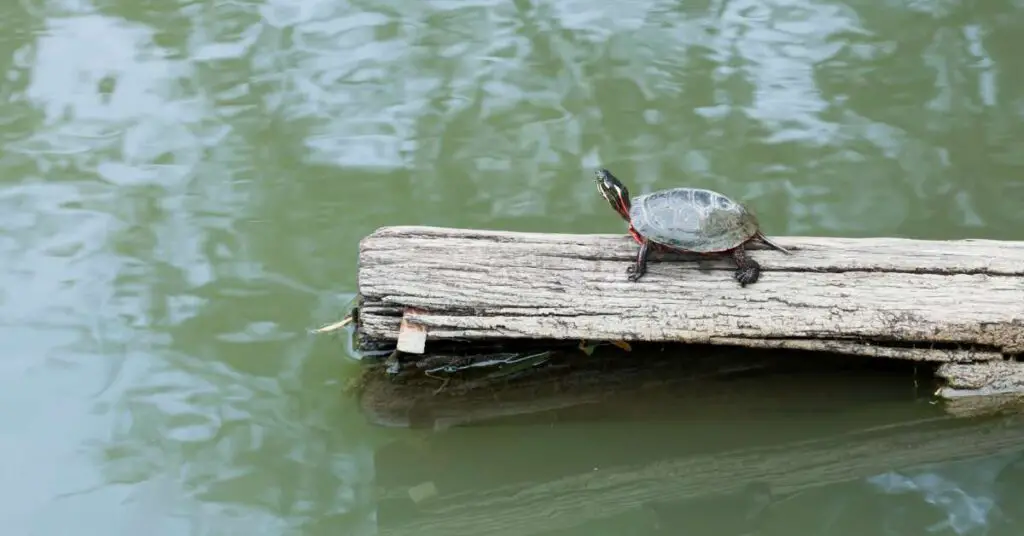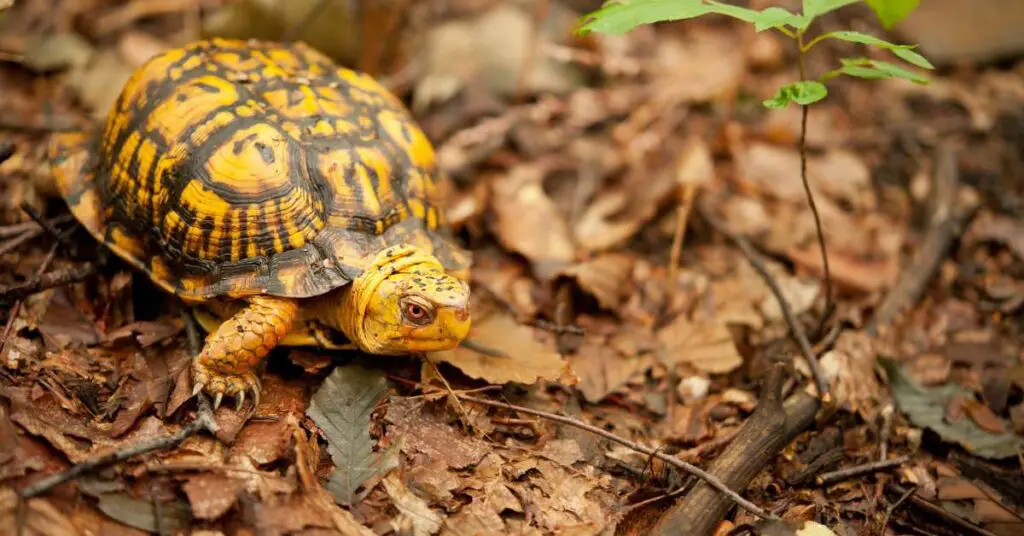Complete Guide To Box Turtle Eggs
If you’re fortunate enough to have box turtles visit your backyard or local wildlife pond, you may have wondered how and why they lay eggs. If so, hopefully this guide will answer most of your questions.
Box turtles come in two main species: western and eastern box turtles, both native to different regions of North America. Each of these two species have their own unique traits and characteristics, but both build nests and lay eggs in mostly the same way. In general, box turtles lay between 1-2 clutches (a group of eggs) consisting of around 2-10 eggs per year. The depth of the nest and the temperature of the environment has a great impact on whether the hatchlings will be male, female, or a mix of both.
Whether the box turtles you care about are local wildlife or pets you take care of, they are a fascinating species that deserves greater understanding and recognition for the part they play in their ecosystem. To that end, let’s talk about everything related to box turtles and their eggs.
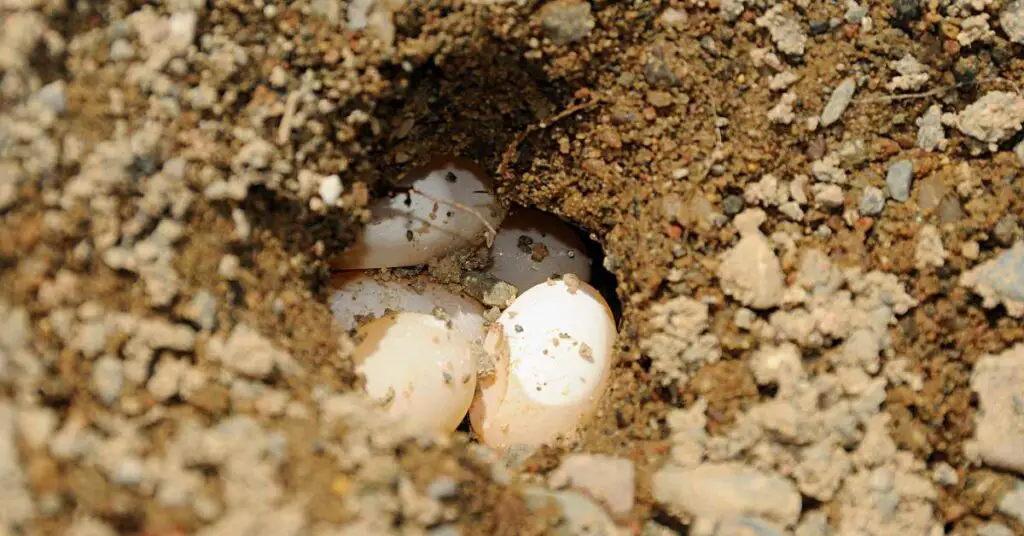
Box Turtles Lay Their Eggs In Wet, Protected Places
Box turtles are one of the few turtle species that are able to lay eggs in the spring. They have an internal biological clock that tells them when it’s time to mate, with their mating season lasting from March through June.
Box turtles like to nest in quiet places where there is plenty of shade and protection from predators, such as other animals or insects. Their nests are constructed out of sticks and leaves so they can hide from predators who might want to eat them or destroy their home after breeding season ends.
Some box turtle couples may not produce any children at all during their life span (depending on how many times each partner has mated), but if you keep checking back every year, eventually most box turtles will produce offspring.

There Are Two Main Species Of Box Turtle
Box turtles are divided into two main species: eastern and western box turtles. While both species are very similar, they have their own unique qualities and reproductive habits.
The Western Box Turtle (Terrapene ornata luteola)
The western box turtle (Terrapene ornata luteola) is a species of box turtle found in the United States, from Washington to Texas and further east all the way to Florida.
The western box turtle has a small body size and resembles many other species of tortoises that live in similar environments. This turtle species has pliable skin with a pointed head at one end, which allows it to burrow into the ground easily.
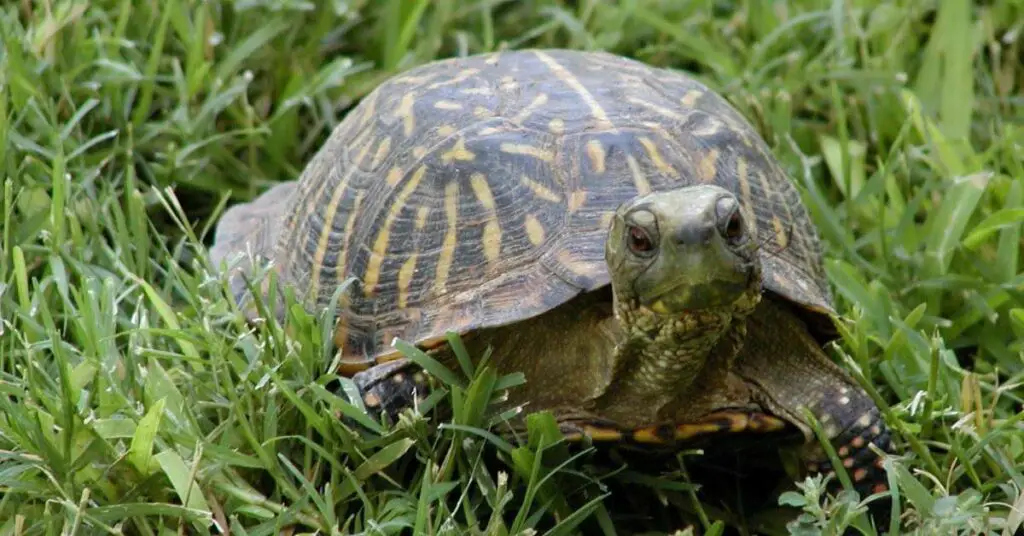
The Eastern Box Turtle (Terrapene carolina carolina)
The Eastern box turtle (Terrapene carolina carolina) is another major species of box turtle native to the eastern United States—and formerly Canada as well. It was named after its geographical range, which includes much of the Northeast and Southeast of the US.
The Eastern box turtle is one of the most common species of turtle in North America, with more than 5 million individual box turtles estimated to be present at any given time. They tend to inhabit wooded areas, marshes, and meadows where they can find plenty of food sources such as insects or snails on land. Box turtles also eat plants during mating season when males are fertile.
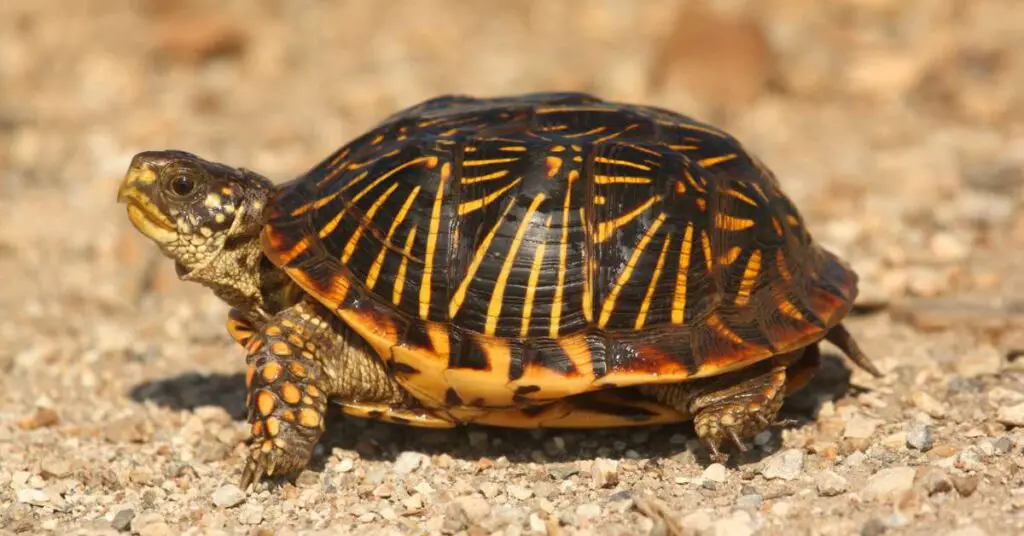
Box Turtles Lay Eggs To Reproduce
While turtle reproduction is not something we commonly think about, box turtles are actually reptiles that lay eggs to reproduce.
The female box turtle will lay anywhere from 1-10 eggs in one year. The eggs are buried in the ground or under debris such as leaves and moss (a bit more on this later). The incubation period is about 60 days and hatchlings emerge from their shells after an additional 20 days or so.
Box turtles are most active during the summer, but can be found out and about in the spring and fall as well. They prefer warm temperatures but will adjust to cooler environments as well, making them likely to adapt well during periods of climate change.
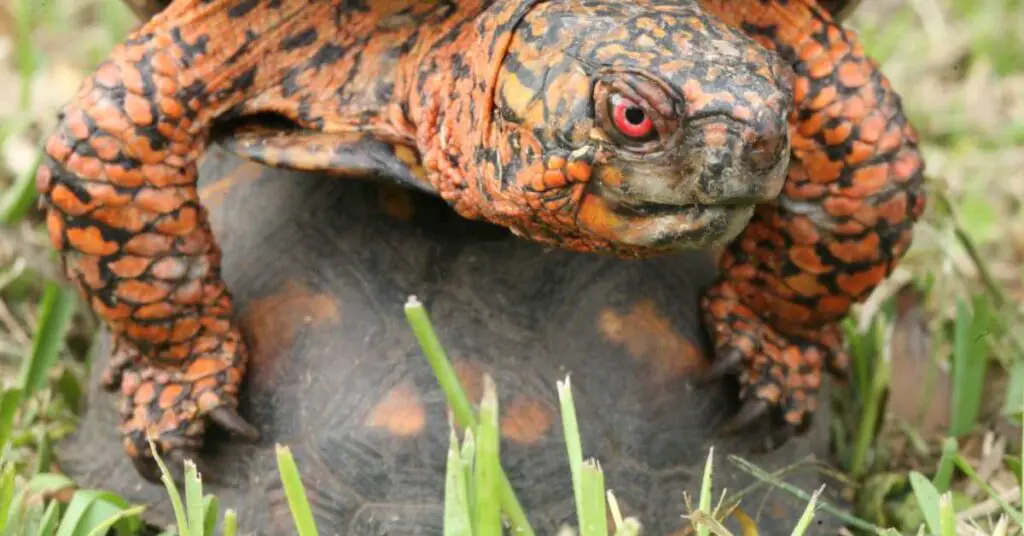
How To Tell If Your Box Turtle Is Female
Determining the sex of a box turtle can be difficult, especially if it’s wild and you can’t easily inspect it closely. If you’re still not sure, keep the following facts in mind:
- The plastron (the bottom of your box turtle’s shell) is wider and longer than that of males.
- Female box turtles have a larger head and neck than males.
- Male box turtles have longer front claws than females, which can be used to defend themselves from predators or catch prey items like crickets or even grasshoppers
Box Turtles Lay Between 2 and 10 Eggs Each Season
During the box turtle mating season (April to October), a box turtle typically lays a single group of eggs (called a clutch) ranging from as little as 2 to as many as 10 eggs per clutch each year.
Box turtle eggs are usually laid during late spring or early summer months when temperatures reach 75 degrees Fahrenheit or higher. However, female box turtles don’t necessarily lay eggs each season—in fact, females can store sperm for up to 4 years so that each clutch of eggs is laid only when conditions are right and the environment is safe for hatchlings.
In order to incubate their eggs properly, box turtles need a temperature between 70ºF – 80ºF for 60 days to mature and additional time to actually hatch—this means you may have up 100 days before you see hatchlings.
Depth of Box Turtle Nests Makes A Difference
The depth of the nests varies between species and individual box turtles. It is affected by the type of substrate and age, but also by weather conditions.
The deeper the nest, the better protected it is from predators like raccoons and skunks. This means that if you have a shallow box turtle habitat that has been dug out by raccoons or skunks in your yard then the baby turtles may be exposed to danger when they first come out of their eggs.
Incubating and Caring for Box Turtle Eggs
Incubation is the process of caring for unhatched eggs until they reach maturity and are ready to hatch. In the case of box turtles, it involves keeping their eggs warm and moist at a temperature between 80-82 degrees F. The temperature should be kept constant by turning them every other day or so, depending on how quickly they hatch out.
Box turtles require special care during their lifetime, as well as when they’re incubating their eggs. In order to produce healthy hatchlings, box turtles require:
- fresh water every day, so make sure there is plenty of moisture (80% humidity) in the material around the eggs
- cover for protection against predators
- consider constructing a nest cage around the eggs, which protects the eggs from predators but allows the mother to come in and out as needed
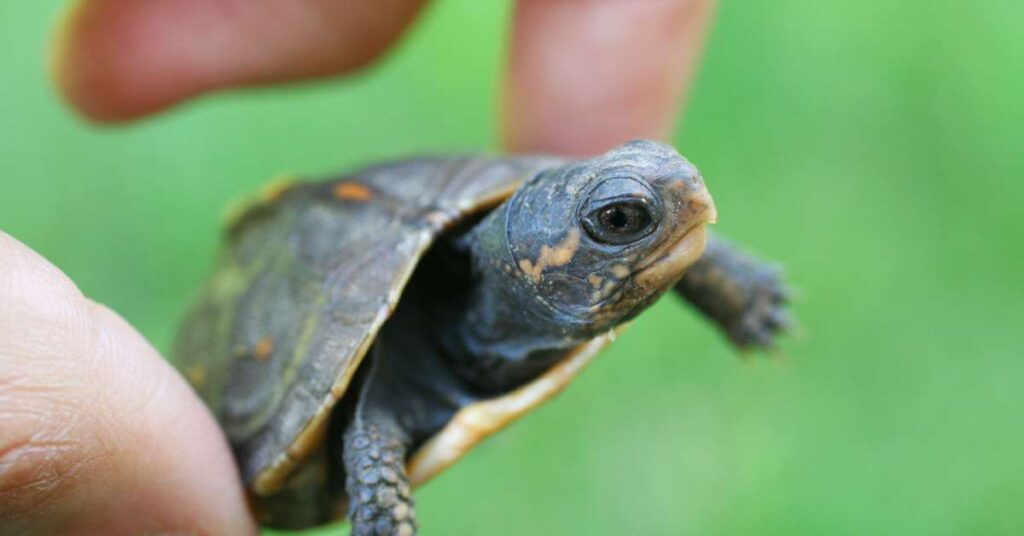
A Box Turtle’s Age Does Not Affect How Many Eggs It Lays
It’s important to note that the age of a box turtle does not affect the number of eggs it lays.
Box turtles are known for their prolific breeding habits and will lay anywhere from 1-10 eggs at a time, depending on the species. For example, eastern box turtles will lay 1 clutch of 2-10 eggs per year, while western box Turtles may produce up to to 2 clutches of 10 eggs per year.
Box Turtles Nest In The Same Spot Each Year
Box turtles will lay their eggs in the same place every year. This is important to know because the best nesting material is a mixture of soil, sand, and leaf debris. Box turtles prefer to nest in shallow areas where they can access the ground easily. They often make use of cracks in stone walls or logs as well as holes dug into the ground by other animals such as raccoons or opossums, even though both are predators of box turtles and their eggs.
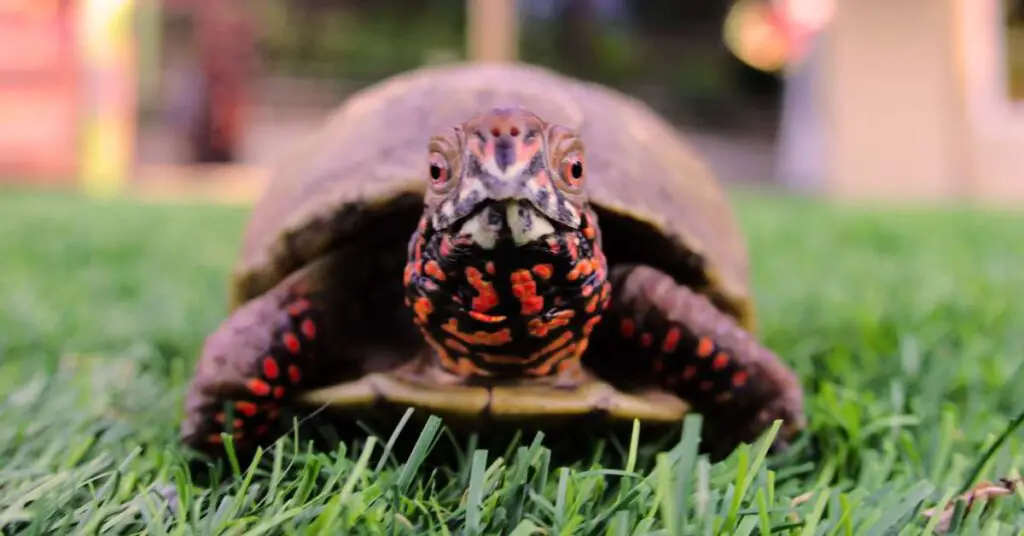
Box Turtle Nest Placement Varies By Location
Box turtles are found in a wide range of habitats, but they generally prefer wet areas. They can be found from sea level to the highest elevations and from forests to plains. Box turtles are most commonly found near water, but they can also live on dry land.
Box turtle nests vary depending on the species and region in which they occur. In general, box turtles prefer laying their eggs in small depressions that are about one foot deep (30 cm) or less. However, some species will dig deeper holes when conditions are favorable for breeding (such as elevated heat during summer months).
A box turtle nest may be placed anywhere within an area accessible by the female: under logs; under bushes, beneath rocks, inside trees, within holes dug into bank, and cliffsides.
Box Turtles Are Sexually Dimorphic Animals
If the box turtle laying eggs is a pet, it’s important to know the gender of the hatchlings. Box turtles are sexually dimorphic, meaning that males and females have different characteristics when it comes to their skin and shell.
Male box turtles have a concave plastron (the bottom part of his shell) while females do not. This is because male box turtles need protection from predators during mating season, so they must develop thicker shells than females do in order for them to survive long enough for eggs to be laid and incubated properly by the female turtle herself (female turtles don’t typically lay more than one clutch per year).
The temperature of the nest environment affects the sex of the box turtle hatchlings as well. For example, if the eggs are incubated at 81F or below, the hatchlings will be male. However, if the eggs are incubated at 88F or above, the hatchlings will be female. On the other hand, if the eggs are incubated in between these two temperatures (81F to 88F), it will result in a mix of both male and female hatchlings.

Final Thoughts
Box turtles are one of the oldest species of turtles, with fossils dating back to the Late Cretaceous Period. They have been identified as prey for various dinosaurs and were even found in the stomachs of behemoth marine reptiles like plesiosaurs.
They’re also one of the most endangered due to habitat destruction, hunting for food and habitat destruction from human development projects. However, these animals are still around today thanks largely because they live in remote areas where they pose little threat to humans or other species.
Be aware that box turtles can only be legally kept as pets in certain areas, so always check your local laws before purchasing. And as always, never disturb or hurt a wild box turtle in any way, especially if they are tending to their nest.
Sources:
- https://blog.nwf.org/2014/07/8-tips-to-protect-baby-turtles-in-your-yard/
- https://www.marshall.edu/herp/Old/boxturtle.htm
- https://portal.ct.gov/DEEP/Wildlife/Fact-Sheets/Eastern-Box-Turtle
- https://www.in.gov/dnr/fish-and-wildlife/wildlife-resources/animals/eastern-box-turtle/
- https://boxturtle.uncg.edu/wp-content/uploads/2015/06/Sexing_Box_Turtles_2015.pdf
- https://oceanservice.noaa.gov/facts/temperature-dependent.html
- https://www.chesapeakebay.net/discover/field-guide/entry/eastern-box-turtle1
Related Posts:
- Why Is A Backyard Pond An Ecosystem?
- Koi Fish Breeding in Garden Ponds -What You Need To Know
- How To Tell If A Pond Has Turned Over
Related Questions:
How Many Eggs Does A Box Turtle Lay?
A typical box turtle will lay 1 clutch (a group of eggs) of around 2-10 individual eggs per year. However, how many eggs and clutches will depend on the specific species of box turtle as well as the environment in which they live.
How Do You Hatch Box Turtle Eggs?
In order to successfully hatch, box turtle eggs must be safely secured in a nest that’s covered (to protect from predators), warm, and with adequate moisture (80% humidity). For best results, consider building a nest cage for extra protection from predators while still allowing the mother box turtle to come and go as she pleases.
How Big Is A Box Turtle Egg?
Box turtles are small, averaging only around 6-7 inches in length and often weigh less than 1 pound. For this reason, box turtle eggs are generally quite small, although they can vary from one clutch to the next depending individual genetics of the mother and environmental conditions.
What To Do If Box Turtle Lays Egg In Your Yard/Garden?
If you see a box turtle in your yard or near your backyard pond, like with most wildlife, the best thing to do is leave it alone and let nature take its course. Most likely, the box turtle is simply looking for food, or perhaps searching for a good spot to lay eggs. If you suspect a mound of dirt in your yard is a turtle nest, leave it alone or put up an unobtrusive barrier near it to prevent accidentally disturbing it.
Do Box Turtles Lay Their Eggs At Once?
Box turtles, like most species of turtle, lay eggs in “clutches”, which simply means a group of eggs. Once or twice per year, a female box turtle will lay a clutch of eggs, all at once, which will then take anywhere from 60-100 days to hatch, depending on temperature and several other conditions.
